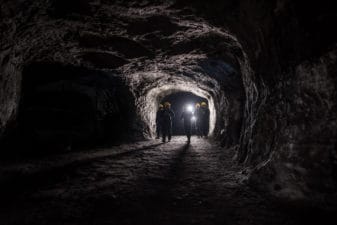Competition in the potash industry is heating up. In case you haven’t heard yet, Potash Corp./Saskatchewan Inc.’s (TSX:POT)(NYSE:POT) archrival Uralkali recently revealed plans to pump a whopping US$4.5 billion into a major potash expansion program over the next five years as it aims to maintain “industry leadership going forward.”
In other words, Russia-based Uralkali will increase its production capacity aggressively in the near future to stay at the top of the game. So what does that mean for PotashCorp investors?
The real picture about PotashCorp’s global position
PotashCorp is known to be the world’s leading potash producer with roughly 20% global share. The chart below, which shows its competitive position versus other key global potash players and was presented in the company’s 2014 annual report, substantiates its claim.

With nearly 15 million tonnes (mt) of potassium chloride capacity, you can safely say that PotashCorp leads the pack. But there’s a catch. The above chart compares PotashCorp with other producers in terms of “nameplate” capacity, or “estimated theoretical capacity based on design specifications” as described by the company.
Of course, anything theoretical holds little meaning for investors, and actual production capacity is what we’re interested in. Digging deeper into PotashCorp’s financials, I found out that its operational capacity stood at around 9 mt in 2014 while its actual production was 8.73 mt. Comparatively, Uralkali produced a whopping 12.1 million tonnes of potash last year – a record for the company.
Long story short, PotashCorp may be the world’s largest namesake nutrient producer by nameplate capacity, but Uralkali is the biggest producer in terms of volumes. And it’s this crucial leadership position that Uralkali wants to maintain in the years to come. But PotashCorp already has its plans in place.
Why PotashCorp investors needn’t worry
Uralkali aims to increase its annual potash production capacity to 14.4 million tonnes by 2020 through expansions and new facilities. In contrast, PotashCorp has nearly completed a major expansion program involving an investment of roughly US$8.4 billion. Here’s where PotashCorp stands now:
- PotashCorp aims to end this year with 19 mt in nameplate capacity and 10.9 mt in operational capacity. By 2016, the company expects to be able to produce nearly 13 mt of potash a year — a substantial improvement over the 9 mt it produced in 2014.
- By 2017, PotashCorp is projected to have operational capacity of nearly 17 million tonnes of potash, backed by continued ramp-up at key facilities.
Yes, you get the picture. Uralkali’s plans suddenly look small when you know what PotashCorp has up its sleeves. If the company hits its target 17 mt of potash capacity by 2017, it will have easily taken over Uralkali as the world’s biggest potash producer.
Long story short, it won’t be easy for any company to displace PotashCorp from its top position given its wide moat in the nutrient industry. Uralkali may have ambitious plans, but PotashCorp investors needn’t worry.








